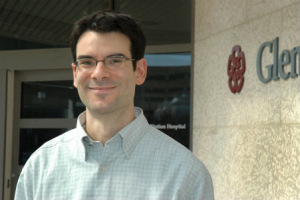A perspective by Lonnie Zwaigenbaum, MD

With recurrence risk estimated as high as 20%, there are many families with more than one child with autism spectrum disorder (ASD). Advances in genetic testing, including availability of clinical microarray testing, with sequencing based technologies on the horizon, could potentially answer families’ questions about what caused their child’s ASD, and what might be the risk to younger siblings. However, a new study published this week, one of the largest to date to use whole genome sequencing (WGS), reports intriguing findings that challenge assumptions about transmission of genetic risk of ASD, and emphasize the complexity even within individual families.
A Canadian research group, led by Dr. Stephen Scherer, Director of the Centre for Applied Genomics in Toronto reported WGS of 85 multiple incidence families (two parents and two siblings with ASD). They found that in 36/85 (42%) of families, at least one child with ASD had DNA alterations potentially relevant to the disorder. However, only in 12/36 (33%) of these families were the same de novo or rare inherited ASD-risk variants identified in both siblings. In the other 24 families, the siblings carried different pathogenic mutations or one sibling had an ASD-relevant variant, and the other did not have one detected. Interestingly, siblings that shared risk variants tended to be more alike in their phenotypic features than those who did not share a risk variant.
At face value, such results seem counter to our assumptions that recurrence risk in siblings reflects shared genetic mechanisms. Even at a population rate of 1 in 68 children, the odds of two siblings having differing genetic mechanisms for ASD would seem very low. However, there could be other as yet undetected genetic (or epigenetic factors) that account for occurrence in multiple siblings, despite not sharing specific risk variants at other loci. Indeed, the findings emphasize the potential importance of mapping variants across the entire genome to understand how multiple variants, independently or in combination, may increase vulnerability to ASD. And non-shared environmental factors may also be at play.
It does seem that if parents have a child with ASD in whom a specific genetic variant has been identified, it may not be sufficient to test their younger child just for that variant in order to determine likelihood of recurrence. As progress is made in WGS of a larger number of families, we will hopefully learn more about how complete sequencing (potentially in combination with other biomarker testing) may ultimately inform risk counseling.
